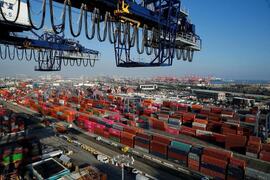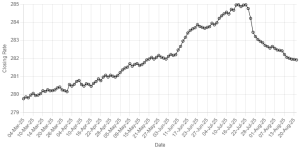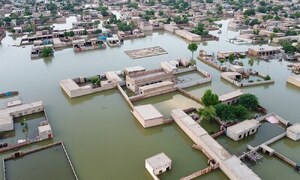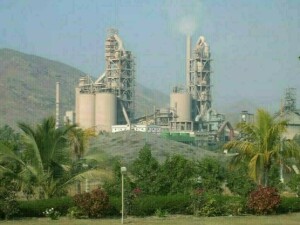Agriculture is the mainstay of Pakistan's economy. Unfortunately, however, it is still largely dependent on the weather conditions in the country and has generally suffered from severe shortage of irrigation water in the recent years.
The position seems to have reversed during 2006-07 due to heavy monsoon rains and floods that hit a large part of the country and affected the "Kharif" crops in varying degrees. The cotton crop, in particular, is believed to have been hit hard. According to the data gathered by the textile ministry, cotton production could touch the mark of 13 million bales if pest attack remained under control till final picking as against the target of 13.82 million bales. Other relevant quarters are, however, not that optimistic.
The Chairman of Farmers Association of Pakistan (MAP) was of the view that even 12 million bales of cotton would be hard to produce due to a variety of reasons. The Chairman of Agri-Forum Pakistan, Ibrahim Mughal said that the farmers had been able to get 6-7 maunds per acre from the first pick, indicating a low yield of only 18-19 per maund during the season.
With such a low per acre yield, the country will be able to produce only 12-12.5 million bales. Lower yield of the crop could also be confirmed from the phutti arrivals in ginning factories. According to the Pakistan Cotton Ginners Association (PCGA), only 1.1 million bales of cotton seed have so far arrived in the ginning factories of Punjab and Sindh, showing a decrease of 170 to 290 bales compared to the corresponding period of last year.
Although firm estimates of the crop are not yet available, certain implications are quite clear. The size of the cotton crop during 2006-07 is certainly going to be substantially lower than the target of 13.82 million bales and the country could experience a shortfall of 2-3 million bales compared to domestic consumption of 15 million bales, and the gap, assuming no change in stocks, has to be bridged through imports which would involve an expenditure of huge amount of foreign exchange.
Also, the GDP growth targetted at 7.0 percent for 2006-07 could be adversely affected because of the importance of the crop in the economy. The cotton crop, it may be mentioned, accounts for 8.6 percent of the value added in agriculture and about 1.9 percent of GDP. It is not only a foreign exchange earning crop but also provides raw material to the local industry and employment to a large number of people.
Probably not much can be done at this stage to improve the total yield of cotton but it seems imperative to at least estimate the size of the crop accurately at the earliest which may not be difficult if the government makes sincere efforts for such an exercise. It is essential to do this because of usually divergent claims made almost every year by the textile industry and the farmers' associations to serve their own ends. An early end to the confusion with regard to the size of the crop would enable the importers to plan imports at an early stage with confidence, put to rest unnecessary controversy and ensure smooth running of the factories throughout the season.
However, more important than this is the task of the relevant agricultural ministries to guide the farmers properly and control the pest attacks with success. It is worth noting that cotton production had reached 14.3 million bales during 2004-05 but declined to only 12.4 million bales last year. One of the factors responsible for the sharp fall in production was the pest attack in some cotton growing areas of Punjab and Sindh.
This year again the MAP has blamed the concerned departments of the government for failure to guide cotton growers about controlling pest attack. It is true that weather conditions cannot be controlled but such negligence in the matter of pest control is simply inexcusable. The silver fibre is so crucial for the economy of Pakistan that no effort should be spared to maximise its output. At least, the level attained during 2004-05 should not be difficult to sustain in the coming years.
BR100
15,115
Increased By
28.1 (0.19%)
BR30
43,048
Increased By
175.6 (0.41%)
KSE100
149,493
Increased By
257.8 (0.17%)
KSE30
45,518
Increased By
11.6 (0.03%)























Comments
Comments are closed.